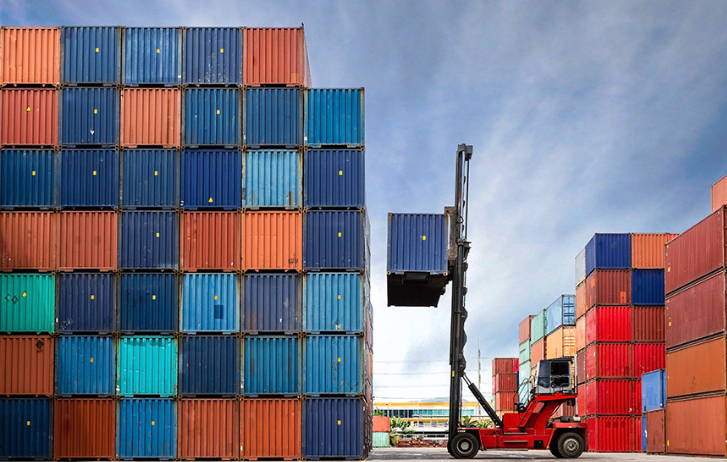
Philippines SMEs Can Finally Take Advantage Of RCEP
By FedEx | First published: August 12, 2022 Updated: May 16, 2024
Businesses in the Philippines, one of the last countries to sign the RCEP, can now benefit from the world’s biggest free trade agreement. We explore the advantages for regional SMEs and e-commerce operators.
The Regional Comprehensive Economic Partnership (RCEP) is the world’s largest free trade agreement, covering about a third of the world’s economic output, trade and population. Since the deal was inked on January 1, 2022, participating ASEAN countries and their businesses have been reaping multiple benefits in trade and commerce.
The Philippines was the last country to sign the agreement, only joining the partnership in June 2023, over two years since the agreement was concluded.
For some Filipino businesses, the delays in ratification were challenging. Economic commentators worried that the Philippines would lose momentum, missing out on trade opportunities that ASEAN partners had wasted no time capitalizing on.
Why is the RCEP important to the Filipino economy?
The RCEP deepens the Philippines’ trade links with 14 key nations in Asia Pacific: Australia, Brunei, Cambodia, China, Indonesia, Japan, Laos, Malaysia, Myanmar, New Zealand, Singapore, South Korea, Thailand, and Vietnam.
The Philippines Department of Trade and Industry has been unequivocal on the advantages of the RCEP for the economy and its businesses, referring to RCEP as a ‘mega-FTA’ that will promote greater openness, create a more business-friendly environment, encourage closer integration of economies, and provide a more stable and predictable rules-based system of trade.
For Filipino SMEs, importers, exporters and manufacturers, it’s important to understand the benefits on offer and waste no time exploring the opportunities that overseas counterparts were given access to earlier.
The RCEP encourages inclusive, comprehensive, and mutually beneficial economic policies that enable Philippines businesses, particularly those in e-commerce, to conduct intra-Asia trade with greater ease and enhanced tariff concessions. Besides removing tariffs, the RCEP has improved intra-Asian market access for the region’s businesses.
All of this is crucial for Filipino entrepreneurs who want to unlock new areas of growth and expand into cross-border markets. We dive into some of the key advantages of RCEP for the Philippines economy and its SMEs:
1. Dialing up digital trade reduces costs and increases efficiencies
The e-commerce chapter of the RCEP features initiatives that encourage SMEs to participate in the growing digital economy and leverage opportunities in online cross-border selling. The trade deal makes way for a uniform system facilitating paperless trading and digitalized solutions such as electronic signatures and digital authentication.
Adopting cross-border, paperless trading can reduce transaction costs and help SMEs create a seamless digital experience for customers – a huge factor influencing purchase decisions. Filipino SMEs who automate processes for logistics and trade can significantly boost their global competitiveness. Business owners will also have more time to focus on enhancing the business and improving their customer service.
Consumer confidence and safety in the digital environment are essential for a well-functioning online trade market. With commitments to improve online retailer and consumer protection, the RCEP can help digital trade in the region and boost confidence in doing business online.
2. Easing customs duties opens up access to new markets
RCEP member states aim to establish commitments on reducing or removing customs duties imposed on goods and services by about 92% within a 20-year timeframe.
For a Filipino SME, this means increased opportunities to offer their products and services globally, especially in the areas of agriculture, garments and electronics. Another sector that stands to gain is the thriving business process outsourcing (BPO) industry, which contributes around US$30 billion annually to the economy (around 11% of the GDP).
Small local enterprises benefit from having wider options for sourcing raw materials and finding cheaper prices. The RCEP has the potential to spur manufacturing and production activities in the country and contribute significantly to job creation.



3. Harmonizing systems and policies for development
The RCEP trade agreement establishes simplified trade rules that will improve international trade transactions and reduce administrative costs for exporters. This encourages more production and manufacturing activities and ultimately provide additional jobs and business opportunities in the region.
By setting in place harmonized systems and policies for sustainable development, the trade deal can address pain points of local businesses, break down trade barriers and herald increased confidence in cross-border trade.
As businesses embrace digitalization to better serve their customers, we continue to evolve our logistics solutions and technologies by enabling local businesses to target global markets. In particular, FedEx Electronic Trade Documents (ETD) and FedEx Delivery Manager have empowered SMEs to embrace e-commerce.
4. Richer investment opportunities mean improved living standards
The RCEP facilitates investment flows and seeks to provide a stable and transparent investment environment. As with other member states, this gives potential foreign investors to the Philippines more confidence, thanks to the RCEP’s framework of rules and regulations to protect their investments.
Increased capital from foreign investment can stimulate economic growth, speed up digitalization, improve infrastructure, and spur innovation across the country.
This often has a positive knock-on effect for consumer welfare and community wellbeing. In a developing country with an economy that is often stalled by natural disasters and extreme weather events, the presence of overseas investment and collateral can help improve access to better services and higher living standards.
Businesses and trade sectors are poised to make up for lost time
By joining the RCEP, the Philippines is now part of a formidable economic bloc with the power to reshape trade dynamics in the region. With a vibrant SME and start-up economy, strategic geographic location and strong supply chain links, the Philippines is more than ready to make up for lost time, taking full advantage of the RCEP now and in the future.
SHARE THIS STORY
- How To Ship A Giant Panda
- How To Make Freight Shipments Work For Your Small Business
- The Rise Of Intra-Asia Trade: Opportunities In The China-Southeast Asia Corridor
- Southeast Asia's Role In Global Manufacturing Supply Chains
- 8 Most Unusual Shipments In The History Of FedEx
- Where Do Old Planes Go When They Retire?
Sign up now and save on your shipping rates!
Sign up now and earn discounts by shipping instantly with FedEx Ship ManagerTM at fedex.com.
Recommended For You

Vietnam’s Businesses Are Lighting The Path To Economic Growth
Vietnam's e-commerce, digitalization and free-trade agreements offer great chances to help move businesses forward and stay ahead of competition.
Read More
Triloueva: A Filipino Footwear Brand For Eco-Conscious Customers
Unable to find footwear she liked, Filipino SME Trina Evangelista launched a family-run e-commerce brand selling locally-made shoes to customers.
Read More
Does RCEP Herald A Golden Age For APAC SMEs?
The RCEP trade agreement is simplifying import and export for SMEs across Asia – and creating more growth opportunities for cross-border commerce.
Read More

